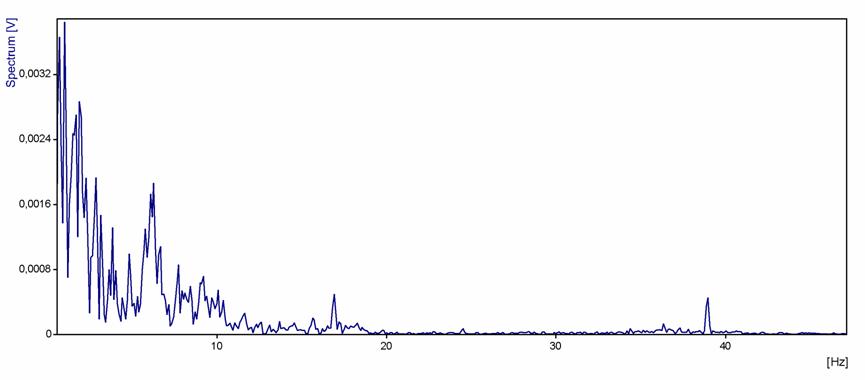Picture this: You’re lying in bed at night when a persistent, low-frequency drone begins to penetrate your consciousness. It sounds like a distant diesel engine that never shuts off, or perhaps the hum of an enormous electrical transformer. Yet when you ask your neighbor about it, they look at you like you’ve lost your mind. This isn’t fiction – it’s the daily reality for a select few residents of Taos, New Mexico, who have been tormented by what has become known as the Taos Hum for over three decades.
The phenomenon seems to have first been reported in the early 1990s, with roughly about two percent of the local population believed to be “hearers.” What makes this acoustic mystery so fascinating isn’t just the sound itself, but the fact that it divides communities down the middle. While some people are driven to sleepless nights and even moved away from their homes, others in the same vicinity hear absolutely nothing.
The Birth of an Acoustic Mystery

In the spring of 1993, a peculiar mystery gripped Taos, New Mexico. Residents began reporting an unsettling noise that nobody could quite put their finger on, and so it became known as the Taos Hum. However, the strange occurrences had actually begun much earlier. The low-level tone, which has been described as a rumbling sound, began in the Taos area in the spring of 1991.
What started as isolated complaints soon became a community-wide phenomenon that caught the attention of local officials and eventually Congress itself. The annoyance was so acute for the “hearers” in Taos, New Mexico that they banded together in 1993 and petitioned Congress to investigate and help them find the source of the noise. This wasn’t your typical noise complaint – it was something far more perplexing and divisive.
What Does the Taos Hum Actually Sound Like?

If you’re wondering what exactly these residents are hearing, the descriptions vary but share common themes. The Taos Hum is described as a faint, low-frequency humming noise, akin to the distant sound of a diesel engine. Some have described it as sounding like a low-rumbling diesel engine idling in the distance. Others have suggested it resembles a jet stream, the whir of a fan, a swarm of bees or a cicada-like hiss.
For those with a musical ear, the more musically-minded residents of Taos, those that can hear the noise, say it’s in the note of E-flat. The sound operates in a specific frequency range: frequency matches in Taos demonstrate that the Hum does not consist of one Hum frequency identical to each hearer, but rather of different frequencies ranging from 30 Hz to 80 Hz that are different, even for hearers in direct proximity.
What makes this particularly interesting is that this frequency range sits at the very bottom of human hearing capability. The reported frequency range of the Taos humming noise – 32 Hz to 80 Hz – falls within the audible spectrum for humans, it is on the lower end of that spectrum.
The Government Steps In: A Scientific Investigation

When residents petitioned Congress for help, the response was impressive. Local concern around the hum motivated a cooperative effort between Los Alamos National Laboratory, Sandia National Laboratories, Phillips Air Force Laboratory, and the University of New Mexico to explore what was going on. This wasn’t just any investigation – it brought together some of the nation’s most prestigious research institutions.
Team members, accompanied by Taos residents who sense the hum, used highly sensitive equipment to detect, measure and record acoustic, electromagnetic, and seismic signals, all the known energy sources of sounds or vibrations. The researchers left no stone unturned, monitoring everything from sound waves to electromagnetic fields to seismic activity.
Yet despite this comprehensive effort, the results were inconclusive as the researchers were unable to identify a source for the Taos Hum using their equipment. The only finding of note was that at the time, there was an elevated electromagnetic field level linked to the town’s power lines.
Who Actually Hears the Hum?

One of the most fascinating aspects of the Taos Hum is its selective nature. It found that 161 of the 8,000 surveyed residents in Taos could hear the hum, representing two percent of the populace. This small percentage creates a unique social dynamic where neighbors can have completely different auditory experiences of the same environment.
There are approximately equal percentages of male and female hearers. Age does appear to be a factor, with middle-aged people more likely to hear it. This demographic pattern suggests there might be something physiological at play, though researchers haven’t pinpointed exactly what makes certain individuals more susceptible.
The social isolation that can result is significant. Because a small fraction of the populace can sense hums, people who have reported these sensations have often been ridiculed by peers and the press, making people less inclined to report such feelings. One of many common threads among people who sense hums is that they do not appear to be mentally infirm, as vocal critics who do not sense hums have tended to think.
The Physical and Psychological Toll

For those who do hear the Taos Hum, it’s far more than just an annoyance. It’s worse at night, making it almost impossible to sleep. Other physical symptoms include debilitating headaches, nausea, nosebleeds and diarrhea. The nighttime intensification makes sleep particularly difficult, creating a cycle of exhaustion and stress.
Consistent with the reports and complaints that had brought the issue to Congress in the first place, hearers described the hum as a cause not just of annoyance, but also of dizziness, insomnia or sleep disturbance, pressure on the ears, headaches and even nosebleeds. Some individuals have reported even more severe impacts. The most common reported effects include headache, nausea, diarrhea, fatigue, and memory loss. Psychological effects of annoyance, feelings of helplessness, sleep deprivation, and suicidal thoughts have been reported by affected individuals.
The psychological toll can be enormous, particularly when combined with the social stigma of reporting something others cannot perceive. In one tragic case in England, the Hum has been linked to suicide.
Scientific Theories: What Could Be Causing It?

Researchers have proposed numerous explanations for the Taos Hum, ranging from the mundane to the exotic. One leading theory focuses on tinnitus-like phenomena. Self-sustained oscillations similar to those observed with cochlear tinnitus or audible otoacoustic emissions may act in one or both ears and cause the Hum. For the majority of hearers the Hum may represent a rare form of tinnitus that has nothing to do with ESs.
However, traditional tinnitus doesn’t fully explain the phenomenon. One problem with such an explanation is that tinnitus itself is not well understood, tinnitus is a high-frequency experience, while The Hum hovers down in the extreme low-end of the frequency range.
Environmental factors have also been considered. Environmental factors have also been blamed, including seismic activity such as microseisms – very faint, low-frequency earth tremors that can be generated by the action of ocean waves. The geological theory suggests that natural earth processes could generate low-frequency sounds that only certain sensitive individuals can perceive.
The Worldwide Phenomenon

Taos isn’t alone in experiencing mysterious hums. Hums have been reported in many countries, including Australia, Canada, the United Kingdom, and the United States. They are sometimes named according to the locality where the problem has been particularly publicized, such as the “Taos Hum” in New Mexico and the “Windsor Hum” in Ontario. Each location has its own characteristics, but the core mystery remains the same.
Another famous hum began plaguing the residents of the coastal Scottish town of Largs in the late 1980s. The “Largs Hum,” like other hums, is loudest indoors and at night and can trigger nosebleeds, crippling headaches and chest pains in the worst cases. In some cases, actual sources have been identified. The Kokomo Hum was isolated in a 2003 study financed by the Indiana city’s municipal government. The investigation revealed that two industrial sites – one a Daimler Chrysler plant – were producing noise at specific frequencies.
Yet even when sources are found and addressed, the mystery persists. Despite noise-abatement measures, some residents continue to complain of the Hum.
The Mystery Continues: Where Do We Stand Today?

More than thirty years after the Taos Hum first gained widespread attention, the mystery remains unsolved. The cause of The Hum likely varies from place to place, and the Taos Hum, in particular, remains, for now, unexplained. What we do know is that this isn’t simply a case of mass hysteria or imagination. What they are sensing is real and is caused by something that they are sensitive to and most others are not.
Recent research has opened new avenues of investigation. A 2019 study suggested that like pigeons, dogs, and turtles, our brains may be sensitive to magnetic fields. Furthermore, the ability of living cells to sense magnetic fields was verified for the first time in 2021, but there’s nothing yet to suggest this could materialize as a hum. This emerging understanding of human electromagnetic sensitivity could provide new clues to solving the mystery.
The phenomenon has evolved beyond just a scientific curiosity. The phenomenon has also permeated local culture, inspiring music, art, and discussions. For some, the hum embodies the unknown and the limits of human perception.
Conclusion

The Taos Hum stands as one of modern science’s most intriguing unsolved mysteries. It challenges our understanding of human perception, the limits of scientific instrumentation, and the complex relationship between individual experience and objective reality. For the two percent of Taos residents who hear it, the hum is an undeniable presence that shapes their daily lives. For the other ninety-eight percent, it remains as elusive as a ghost.
What makes this phenomenon so compelling isn’t just the mystery itself, but what it reveals about the boundaries of human knowledge. In an age where we can detect gravitational waves from colliding black holes billions of light-years away, we still can’t definitively explain a sound that some people hear in a small New Mexico town. The Taos Hum reminds us that mysteries still exist in our everyday world, waiting to be understood.
What do you think about this enduring acoustic puzzle? Tell us in the comments.




